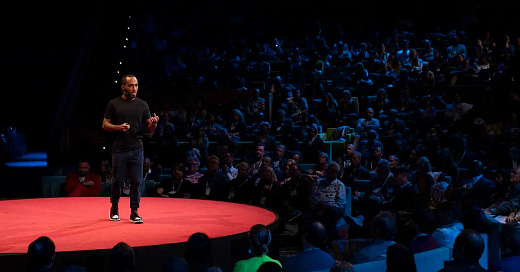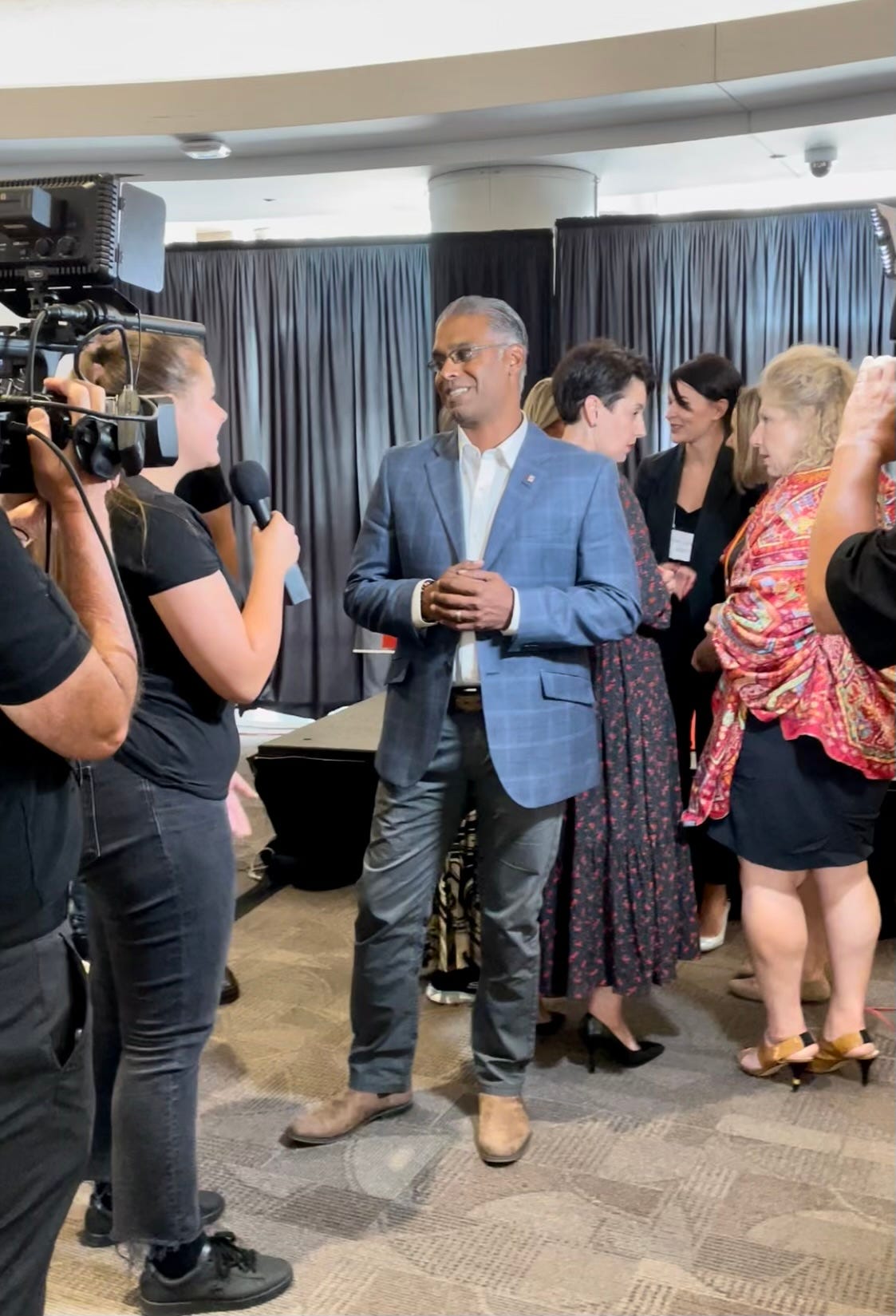Colour Blindness: The Complication of a Simple Metaphor
By Neil Gonsalves | Discussing diversity ideology and how we convolute the subject.
Written by Neil Gonsalves for Seeking Veritas on Substack
“To interpret the phrase colour blindness literally is to misunderstand it. - It uses a physical metaphor to capture an abstract idea. To advocate for colourblindness is not to pretend you don’t notice race, it is to support a principle that we should try our best to treat people without regard to race both in our personal life and in our public policy” - Coleman Hughes
The news stories regarding Coleman Hughes’ TED Talk made me ponder the reaction and response that has become fairly common anytime the phrase “colour blindness” comes up. I remember sensitivity training courses in the 90s that promoted the idea based on the seemingly sound logic that reducing a person to their immutable superficial characteristics was flawed. I guess we’ve evolved on that position in the second decade of the 21st century.
Hughes has spoken consistently on the subject of race and policy and as such the content of his talk should not have come across as a surprise to anyone. He is an extremely intelligent, articulate and successful young social commentator who writes and communicates with refreshing clarity.
In an article Coleman Hughes wrote for The Free Press titled, ‘Why Is TED Scared of Color Blindness?’ he described his experience with TED the day after delivering his talk, ‘A Case for Colourblindness’.
(I have included the video below).
Hughes argued that the TED organization tried to suppress his talk after receiving complaints from a group called “Black@TED”— an “Employee Resource Group that exists to provide a safe space for TED staff who identify as Black”. However when Hughes agreed to speak with the group and hear their concerns, Chris Anderson, the head of TED, informed him that Black@TED actually was not willing to speak with him.
When I did my TEDx Talk in Toronto in 2022, I called it ‘How Common Humanity Gets Lost in the Jargon of Inclusivity’ - One of the key components I discussed was our reductive use of labels to signal compliance with the the racial nomenclature of the day. I specifically took issue with the term BIPoC, an acronym that I personally think, sounds like a disease. I am neither famous nor as popular as Coleman Hughes, but in my small way I was trying to speak to the intent behind a colour blind approach to social interactions.
In the Talk I mentioned that over the last several years the acronym BIPOC as in black, Indigenous and people of colour was perhaps intended to prioritize those previously marginalized and elevate their voices in an attempt to level the playing field.
Let’s break that down. We are identifying the plight of black people on the basis of their history and suffering; we are identifying the current circumstances of Indigenous peoples on the basis of their history with colonialism and their suffering, and then we lump everyone else who is not white, black or Indigenous into a single collective group with no identifiable history or story as “People of Colour” - Is that inclusive or convenient?
I suggest we have employed a certain degree of my-side bias, focused on recent activism and then attempted to craft an all encompassing narrative around it. Language can be divisive, and at the risk of splitting hairs, how do we decide who gets first billing? Why not indigenous first, they are after all the first peoples of this land.
Why are black people and indigenous peoples, distinct from other people of colour? Surely nobody believes that all the other people of colour have so insignificant a history on this continent that they are unworthy of distinction.
Why are white people not people who could have been marginalized? To decide that all people of colour or all white people are a singular monolithic group that share characteristics so broad that specificity and distinction is not required, seems to violate the basic tenets of inclusivity.
The focus on a common humanity is missing in the discourse of inclusivity. It may be worth remembering that not all white people have always been considered equal. Membership to the group deemed white has also varied with time. Italian, Irish, Scottish and Eastern European people did not neatly fit into the dominant group of ‘white’ at various stages of history. Privilege in this context quickly becomes a matter of subjective evaluation.
Perhaps race and ethnicity alone do not define a person, nor make them all one monolithic group that all think, feel and opine the same way. Perhaps we need to accept that diversity of thought and opinions, just like the diversity of identifying variables, cannot be captured in such narrow terms. - Freddie Deboer writing for The Free Press asks a critical question worth pondering, “What is the political value of dividing up progressive constituencies into smaller and smaller groups? How does that help anyone achieve any of their specific aims, including BIPOC people?”
Inclusivity today is a topic that is given a great deal of priority and prominence in our discourse. For some, it's practically about bringing previously marginalized people into the fold; shedding the mistreatment of the past and opening up access to resources for all people. For others however, it is a means of seeking retributive justice, assigning blame, creating shame, and elevating the voices of those previously marginalized regardless of their perspective or position. The latter strategy has a fundamentally othering influence and actually fails to acknowledge the richness of diversity among all people.
Robert P. George, Professor of Jurisprudence at Princeton University, suggests that supporters of “anti-racism” have adopted an ideology rooted in condemnation of “liberal theories and approaches that propose formal equality and color-blindness in public policy as mere masks for institutional or structural (“systemic”) racism.”
The contemporary anti-racist perspective is informed in large part by the vision of Boston University’s Ibram X. Kendi, author of the bestselling “How to Be an Anti-Racist,” whose popularity has soared since 2020. Kendi advocates for what he calls, “positive antiracist discrimination” as a remedy to past discrimination.
“The only remedy to past negative racist discrimination that has produced inequity is present positive antiracist discrimination that produces equity. The only remedy to present negative racist discrimination toward inequity is future positive antiracist discrimination toward equity.” - Ibram X. Kendi
I am not arguing that there have been no historical grievances. My argument is also definitely not an endorsement of past inequities, but it should prompt us to question whether two wrongs do really make a right.
Is social inclusion for some and not for all? Is common humanity limited to those previously commonly subjugated? And is there a way forward that celebrates our common humanity by learning from the lessons of history, that clearly demonstrates the flaws in assigning hierarchy by race or other features that are only skin deep? What happened to the desire to be judged by the content of our character rather than the colour of our skin?
To follow Kendi’s advice would be to live in a constant state of cyclical discriminatory behaviour, while merely substituting who we consider the oppressor and the oppressed. - Although I imagine that the Centre for Anti-Racist Research would argue that those categories are eternally fixed.
In his essay titled ‘Actually, Color-Blindness Isn’t Racist’, Hughes cites some of the early references to the phrase before it became a lightening rod in the culture debates of our times. Specifically he draws attention to the positive use of the phrase Colour Blind by several prominent individuals and highlighted that “though it has roots in the Enlightenment, the color-blind principle was really developed during the fight against slavery and refined during the fight against segregation”; (See a quote from the original article below)
Wendell Phillips, the President of the American Anti-Slavery Society, who in 1865, Phillips called for the creation of “a government color-blind,” by which he meant the total elimination of all laws that mentioned race. - George Lewis Ruffin, America’s first black judge, described Wendell Phillips as “wholly color-blind and free from race prejudice.”
The 1896 Supreme Court case Plessy vs. Ferguson, in his lone dissent Justice John Marshall, wrote: “Our constitution is color-blind, and neither knows nor tolerates classes among its citizens.”
The phrase was cited by Thurgood Marshall when he battled segregation in the courts.
Among the main goals of the Civil Rights Movement was the elimination of laws and policies that used the category of race in any way - championed by Rev. Martin Luther King Jr.
A recent Angus Reid Institute survey on racism in Canada demonstrated that there is a perceptual gap between government, academia, and the population on whose behalf they are trying to fight systemic racism and oppression.
“Currently the terms ‘racialized minority’ or ‘racialized groups’ or ‘people of colour’ are preferred by people labelled as visible minorities,” reads one of several “anti-racism lexicons” now maintained by federal agencies.“
However among non-white Canadians outside of government and academia almost nobody is referring to themselves by the government-approved names for their demographic. A mere 6% of non-white Canadians polled used the terms racialized, and BIPOC to describe themselves. Most “people of colour”, as we apparently like to be called, actually prefer the term “visible minority” according to the poll.
I leave you with three suggestions for consideration:
Perhaps our laws and our policies should focus on consistency of application and clarity of purpose rather than specificity of superficial differences.
We shouldn’t need a reminder but the dictionary definition of a metaphor is; a figure of speech in which a word or phrase is applied to an object or action to which it is not literally applicable.- So when one says colour blindness they do not mean literally that they cannot see race/colour.
We should narrow the gap between government policy, academic jargon and the people who experience the actual issues in the community. Sometimes there really is value in Keeping It Simple and not over complicating every aspect of life!
About the Author:
Neil Gonsalves | Co-Founder SG Productions | Neil is an Indian-born Canadian immigrant who grew up in Dubai, U.A.E. and moved to Canada in 1995. He is an Ontario college educator, a TEDx speaker, a published author and columnist, and an advocate for new immigrant integration and viewpoint diversity.
Notes:
https://studentsforfairadmissions.org/actually-color-blindness-isnt-racist/
https://nationalpost-com.cdn.ampproject.org/c/s/nationalpost.com/opinion/poll-finds-non-white-canadians-reject-ottawa-approved-bipoc-racialized-label/wcm/93591a14-4408-4ee4-ab5c-76890b158cfa/amp/
https://www.deseret.com/2023/8/6/23800937/critical-race-theory-martin-luther-king-jr-dei









I appreciate your willingness to wade into these waters, and your ability to sift through the issues in a measured way.
Colour-blindness: I also remember when this was suddenly the preferred approach and was gaining steam everywhere. Interesting how things changed direction so quickly and completely.
Great way to end off with those three suggestions. Really like and totally agree with suggestion #3.